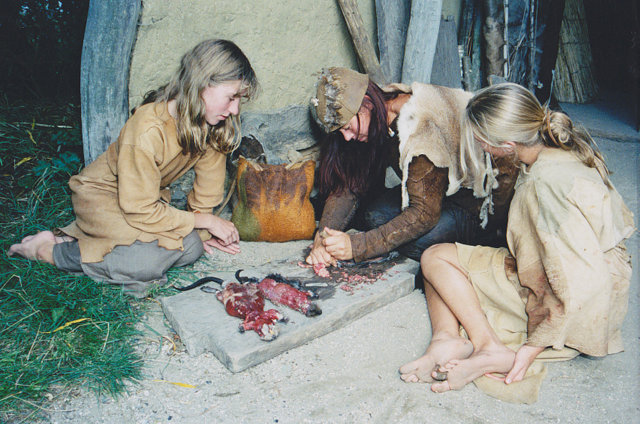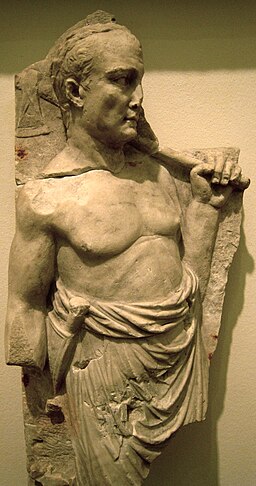What will I teach, and why is it interesting or relevant? How will people use what they learn?
Transcript
Why are all students required to take courses in the humanities, history, philosophy, or religion?
A college degree means something and it informs a potential employer that as an individual you have more to offer an organization.
Holding a college degree is much more than just job training. You have a broad range of knowledge to draw from in order to make statements about areas outside your professional competence.
Another reason is that studying fields outside of your professional competence enriches your personal life.
Finally, the 21st century workplace is diverse and global. A person who is prepared for globalism is much more likely to be successful.
Slide 2
Describe the concept taught.
Transcript
Unfortunately, for most advanced K-12 students and lower-division undergraduates, the design of most courses do not match the user's experience. I propose the Lemma way.
Slide 3
This is an example that the audience can relate to.
Transcript
In a typical course the design of the class content will introduce the student to the Code of Hammurabi. For example, they might be asked why did humans adopt a written law code? Could there be any upside if the laws were harsh and sometimes unfair?
Slide 4
Connect the example to the idea and explain how it applies.
Transcript
A Lemma solution takes the standard Code of Hammurabi example but allows the student's experience to be paramount in a non-linear technology development. A technology tree permits options for a student to choose their own path to development. Technology trees are evolutionary tree diagrams that simulate the progress of technology in a Lemma course but in a less deterministic manner than traditional courses.
Here is a scenario problem to let the audience apply what they have learned.
Transcript
Let us say for example that a student thought building materials was a higher priority to develop as opposed to a law code that arose from writing, and before that a priesthood, which itself was preceded by myths. For this learner, mining led to bronze working, which led to iron working, and culminated in a compass.
Slide 6
Summary
Summarize the key questions as a takeaway to remember.
Transcript
Which is the better technology tree to follow? Is starting from mining to result in a compass better than a myth which led to the Law Code of Hammurabi?
In any case, the student has options to decide from in order to more clearly understand the contingency of choice and technology development.
Which would you choose? Which is better? The learner decides.
Here are two options for a technology tree decision:
Option A
A student might think that building materials was a high priority for a civilization to develop.
Mining
Bronze working
Iron working
Compass
Option B
On the other hand, a learner might think that myths to explain the origins of a cultural practice or natural phenomenon is significant.
Myths
Priesthood
Writing
Code of Hammurabi
Option A Prehistoric mining
Do you think this is a priority and would you choose this path of development?
Good choice!
Consequence:
Bronze working
Mining allows your workers to increase the production of elements from the earth, chop forests to reach those elements, and encourages the construction of other improvements.
Mining leads to bronze working and the Bronze Age which is characterized by smelting copper and alloying with tin, arsenic, or other metals, or by trading for bronze from production areas elsewhere. Bronze Age cultures differed in their development of the first writing. According to archaeological evidence, cultures in Mesopotamia (cuneiform) and Egypt (hieroglyphs) developed the earliest viable writing systems.
Consequence:
Iron Working
Your choice reveals the importance of iron and allows your workers to chop jungle, clearing the geography of your region so other improvements can be constructed. It also allows you to build the spearman which is a military unit strong against mounted enemies.
Since you chose bronze working this led to iron working. Ferrous metallurgy involves processes and alloys based on iron. It began far back in prehistory. The earliest surviving iron artifacts, from the 4th millennium BC in Egypt, were made from meteoritic iron-nickel. It is not known when or where the smelting of iron from ores began, but by the end of the 2nd millennium BC iron was being produced from iron ores from China to Africa south of the Sahara. The use of wrought iron (worked iron) was known by the 1st millennium BC. Steel (with a carbon content between pig iron and wrought iron) was first produced in antiquity as an alloy. Its process of production, Wootz, was exported before the 4th century BC to ancient China, Africa, the Middle East and Europe. Archaeological evidence of cast iron appears in 5th century BC China. Iron working allows you to build the swordsman which is an extremely powerful melee unit.
Consequence:
Compass
Your development of iron working led to the important discovery of the compass. A compass is an instrument used for navigation and orientation that shows direction relative to the geographic "cardinal directions", or "points". The magnetic compass was first invented as a device for divination as early as the Chinese Han Dynasty (since about 206 BC). The compass allows you to build the Galleass, the first ranged naval unit, though still dependent on a sail-oar combination and the Galleass can't enter deep ocean; however, it possesses an on-board projectile launcher, which allows it to attack with impunity from a distance, both in the sea and on land.
Myths
A myth is any traditional story consisting of events that are ostensibly historical, though often supernatural, explaining the origins of a cultural practice or natural phenomenon. A myth also can be a story to explain why something exists. Myths also contribute to and express a culture's systems of thought and values.
Do you think this is a priority and would you choose this path of development?
Good choice!
Consequence:
Priesthood
Myths led to a priesthood and in historical polytheism, a priest administers the sacrifice to a deity, often in highly elaborate ritual. In the Ancient Near East, the priesthood also acted on behalf of the deities in managing their property. In Ancient Greece, some priestesses such as Pythia, priestess at Delphi, acted as oracles. Your people are united by a common story and destiny. Rituals need to be remembered and passed on and you are in harmony with the gods and nature.
Consequence:
Writing
The priesthood led to the need to record and remember important information through writing. Writing is not a language but a form of technology that developed as tools developed with human society. The motivations for writing include publication, storytelling, correspondence, and diaries. Writing allows you to develop science and public knowledge in a library, helping your civilization research new technologies more quickly. Around the 4th millennium BCE, the complexity of trade and administration in Mesopotamia outgrew human memory, and writing became a more dependable method of recording and presenting transactions in a permanent form. In both ancient Egypt and Mesoamerica writing may have evolved through calendrics and a political necessity for recording historical and environmental events. Writing has been instrumental in keeping history, maintaining culture, dissemination of knowledge through the media and the formation of legal systems.
Consequence:
Code of Hammurabi
Writing led to the declaration of a public and universal law code. The Code of Hammurabi is a well-preserved Babylonian law code of ancient Mesopotamia, dating back to about 1754 BC. It is one of the oldest deciphered writings of significant length in the world. The code consists of 282 laws, with scaled punishments, adjusting "an eye for an eye, a tooth for a tooth" (lex talionis) as graded depending on social status, of slave versus free man. Nearly one-half of the code deals with matters of contract, establishing, for example, the wages to be paid to an ox driver or a surgeon. Other provisions set the terms of a transaction, establishing the liability of a builder for a house that collapses, for example, or property that is damaged while left in the care of another. A third of the code addresses issues concerning household and family relationships such as inheritance, divorce, paternity, and sexual behavior. Only one provision appears to impose obligations on an official; this provision establishes that a judge who reaches an incorrect decision is to be fined and removed from the bench permanently.
Which is the better technology tree to follow? Is starting from mining to result in a compass better than a myth which led to the Law Code of Hammurabi?
In any case, the student has options to decide from in order to more clearly understand the contingency of choice during technology development.
Which would you choose? Which is better? The learner decides.








